The Article
Lenco L-3808 Turntable: Direct Drive on a Budget
24th May 2017
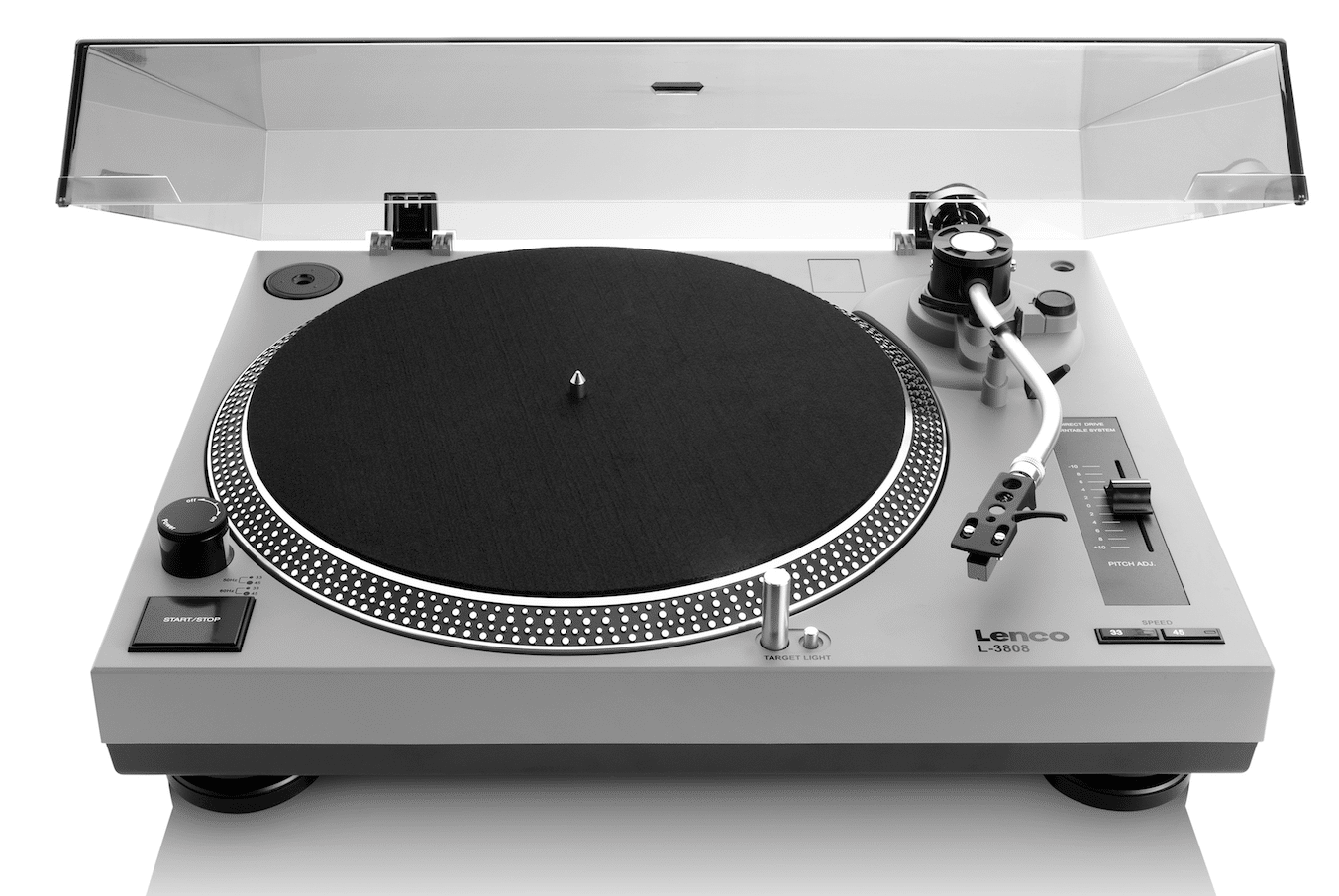
Want to go direct drive but are afraid of the expense? Lenco might have a surprise for you. Paul Rigby reviews the Lenco L-3808 (and provides a money off deal: see the end of the review)
Right, take a quick look at the price point below and then take a gander at the images and you just know that Made In China or similar is hidden somewhere within the chassis of this Lenco design. At this point the analogue snobs will lift their nose and leave the room. Still here? I’m glad, because this little turntable has a few surprises in store.
But what about that strobe light and pop-up light (for DJ use) that will immediately warn you that this might be a sad little Technics 1200 rip off? In this case, first impressions are very wrong indeed (although the turntable is recommended as an effective budget DJ tool, that’s true).
The construction is relatively solid for this price point with an all up weight of 5.4kg (the competing Dual MTR-75 weighs in at 4kg, for example).
The unit arrives with a dust cover but I would recommend removing it during play to avoid noise from its rather shaky mounting. By all means put it back, in place, when your listening session in over to protect from the dust.
The S-shaped arm looks and feels flimsy and small but it is secured well with an arm lock to prevent accidents. At the end of the arm is a removable headshell containing a standard (for this price) Audio Technica AT-3600 cartridge which Lenco asks you to run at a tracking force of 2g. Interesting because Dual, via its MTR-75 turntable, requests that you run exactly the same cartridge at around 3.25g! I know which one I’d rather place in my vinyl grooves! If you do buy yourself this deck, upgrade to a better cartridge ASAP. Something non-conical too which will enhance detail retrieval and the sonics immeasurably.
A manual turntable, beginners will be happy to see an arm lift which worked easily and well. An included moving magnet phono stage (which appears to be similar to that featured in the Dual MTR-75) is fitted within the chassis to save costs and to enable you to connect the deck to an amplifier’s line input or powered speakers. It can be switched to accept an external phono amplifier too, something that I would highly recommend as soon as you can afford one to further increase sound quality. A USB digital output is also present that can be used with the included Audacity music editing software to enable digital recording of your analogue discs. A mains cable is pre-fitted to the turntable.
IN USE
I found that, playing the turntable at 33.33, I did have to move the pitch adjustment just a tad from the default ‘0’ postion, to correct a slight speed drop.
OK, there’s no quartz control connected to the direct drive motor here, so you can’t expect nailed on speed control but it ain’t too bad once you get to grips with the pitch adjustment. The 8-pole, 2-phase design does a decent job considering the price.
Apart from that, the Lenco sprang into life without any issues.
SOUND QUALITY
I began the sound tests playing a selection of the 80s minimalist synth outfit, Bizarre Unit, combining vocals, sparse early synths with organic instruments
One of the principle failings of the budget turntable – even more so the sub-budget table – is how very much out of control it is in terms of assembling and presenting diverse frequencies to your ear. Just about everything that can go wrong normally will: blooming bass, smearing midrange and faltering stereo image with a flat soundstage and no character to any of the instruments. The Lenco addresses many of these failings from the core of one single feature: it’s direct drive motor. This single, yet essential, feature gives the turntable that one essential weapon in its sonic armoury, control. Because of the direct drive motor, there is far more focus and precision in terms of overall presentation than you would normally expect at the low, low price point.
Apart from the stereo image being rock solid and central, the bass was noticeably heavier than normal with a heft and weight that added significant presence to the entire track. Drums were meaningful and full of character, giving a foundation to the music that moved it forward at a steady pace while the midrange was, for the price, so accurate it actually created air and space in the soundstage, allowing more vocal reverb to be ‘visible’. This accuracy also infused the electric guitar with a sense of extra speed, as the transient performance improved immeasurably. The bass guitar also had more form and character. The vocals – both male and female – exuded emotion but also the delivery provided new details and nuance while the synths stopped spewing their smearing frequencies over everywhere and kept themselves to themselves. They no longer tried to mask subtle details, giving the music a richer flavour.
I then moved to the jazz vocal of Gogi Grant and the track By Myself, from the 1960 LP, Granted It’s Gogi on Living Stereo.
Grant’s wide ranging and dynamic vocal needs space and air to expand into and the Lenco, considering it’s low price point, certainly offered that. Grant fairly sparkled into a stereo image that pushed backwards as a 3D effect, allowing her big band orchestra to play around her. The focus upon her vocal allowed the ear to follow each element of her delivery with some ease.
The brass offered no brightness or stridency but, instead, had a texture through the vibrational effects of the performance giving an admirably brassy tone to this section of the backing band while keeping a measure of reverb to add energy to its effect.
Bass, from this direct drive, bounced and responded splendidly. The double bass having a notable sense of power and control on the early parts of this track. Percussion was particularly successful off this track. Partly, because the precise treble performance allowed the cymbals to offer both delicacy but also accuracy.
CONCLUSION
It’s not perfect – how can it be at £200? This is a sub-budget design so the myriad of tiny design quirks can and should be forgiven. The sound quality, meanwhile, is absolutely superb. A real shocker because it really shouldn’t be at this low, low, price. The Lenco is a solid (in plastic terms, at any rate), great sounding and easy to use turntable. A top class budget performer and a brilliant choice for anyone wanting to enter the vinyl fray.
LENCO L-3808 TURNTABLE Price: £200 Tel: 0333 1234 603 Website: www.lencouk.com TO BUY CLICK BELOW: UK - https://amzn.to/35TNWIA EUROPE - https://amzn.to/35ZtSV4
GOOD: precision, focus, ease of use, bass, price, direct drive
BAD: slight initial speed adjustment required
RATING: 9
REFERENCE
Dual MTR-75 turntable
Trichord Dino phono amplifier
Rega Brio-R amplifier
Spendor S3/5R speakers
Tellurium Q cabling
Harmonic Resolution Systems Noise Reduction Components
All vinyl was cleaned using an Audio Desk’s Ultrasonic Pro Vinyl Cleaner

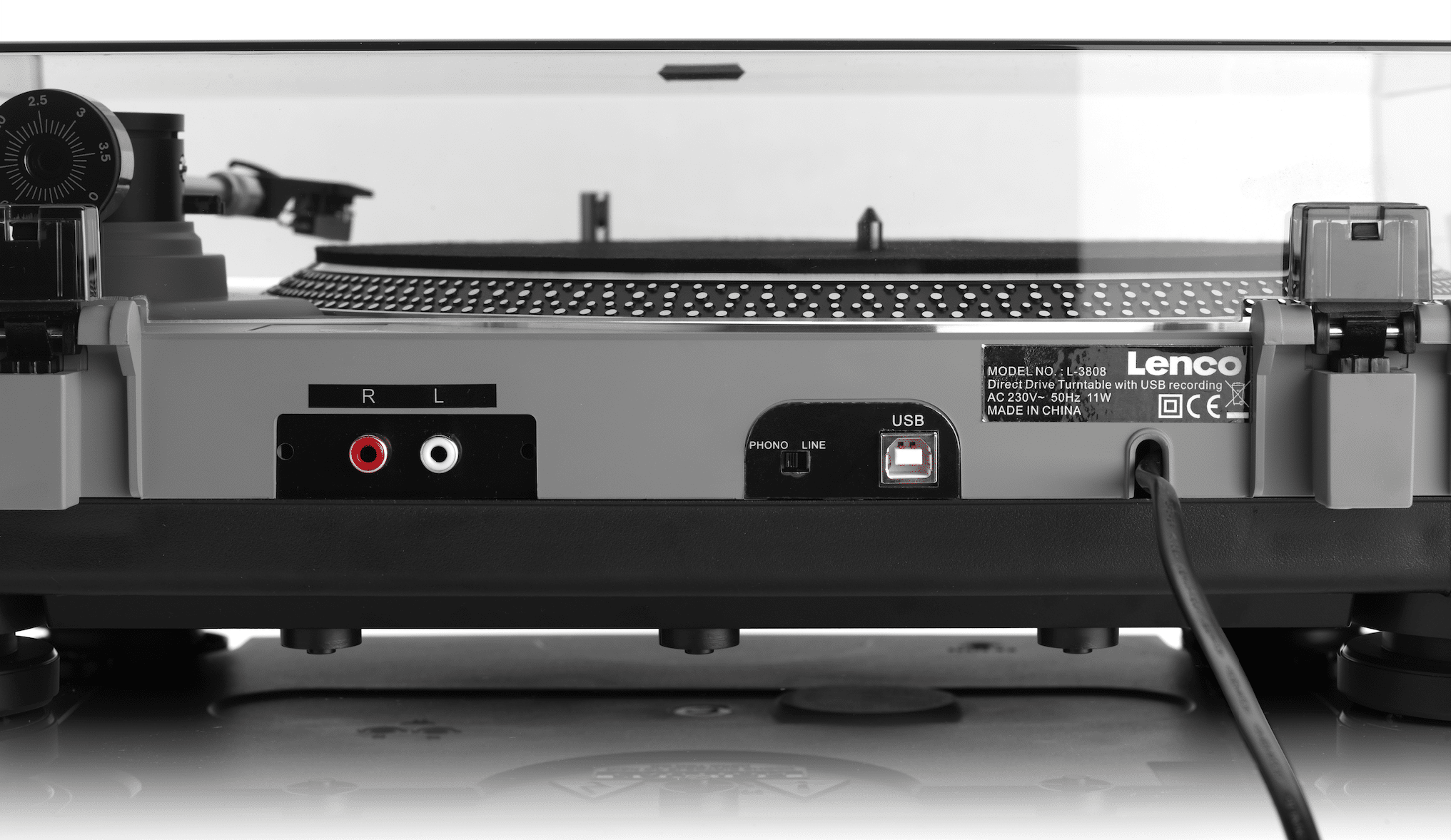
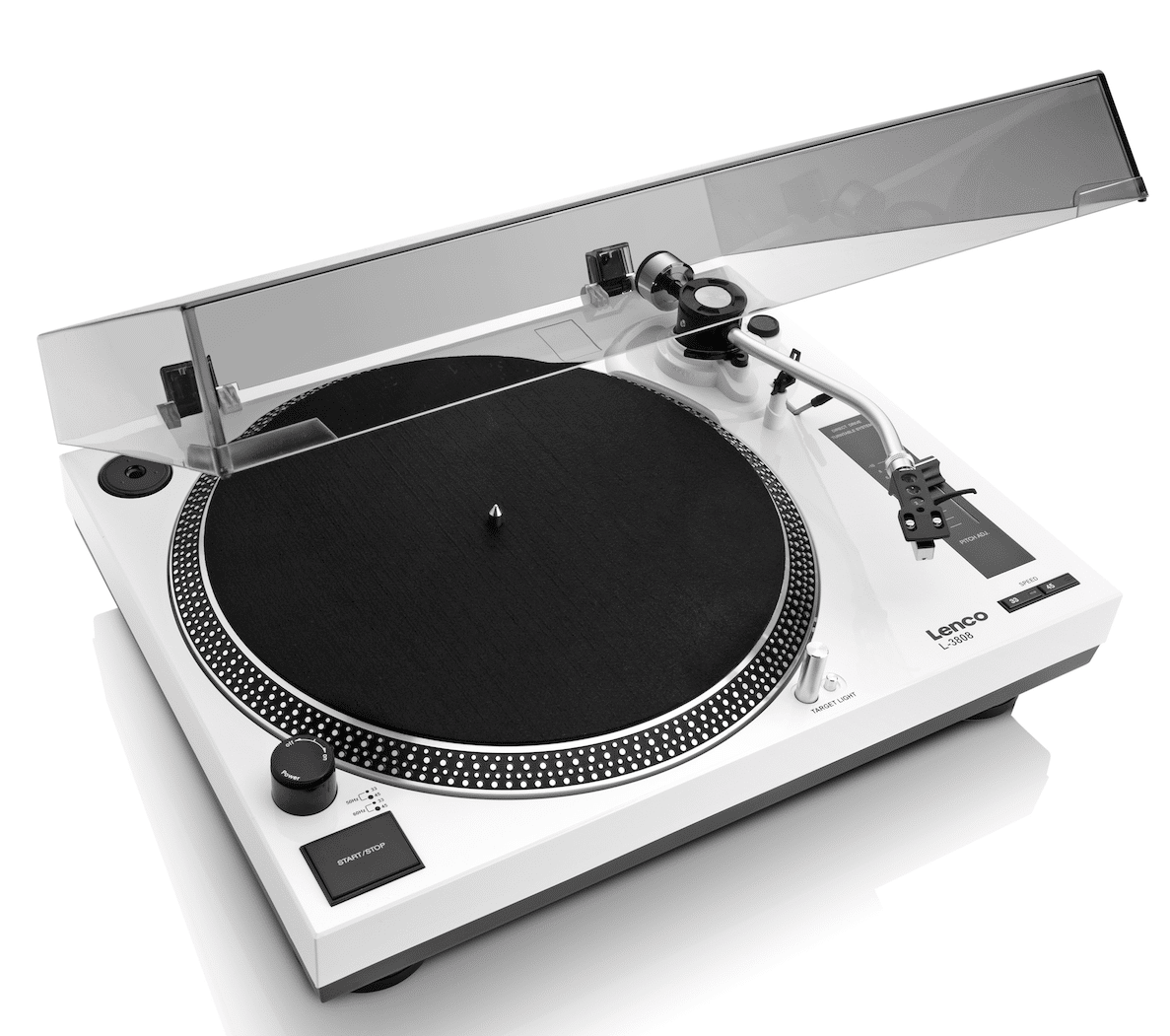
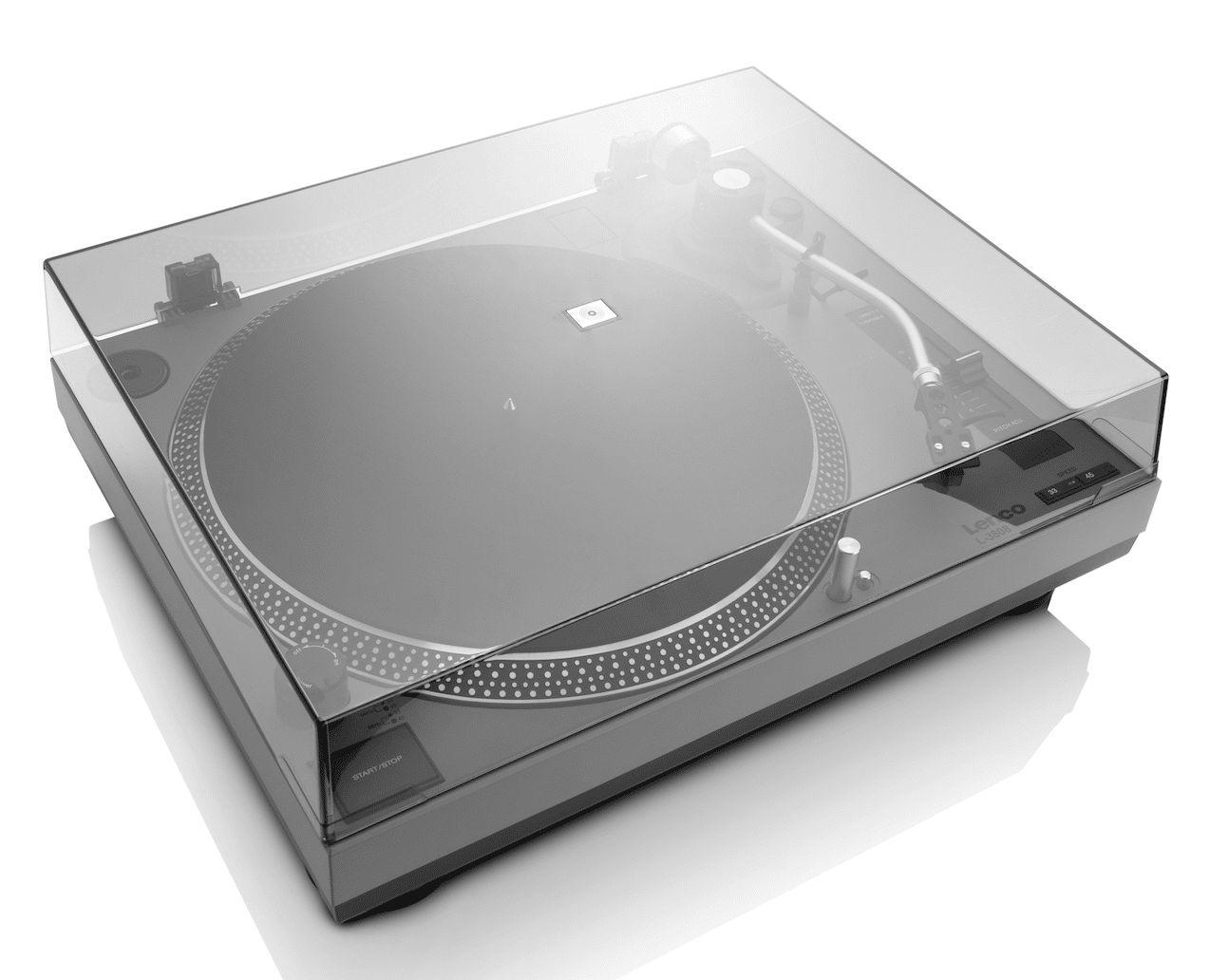
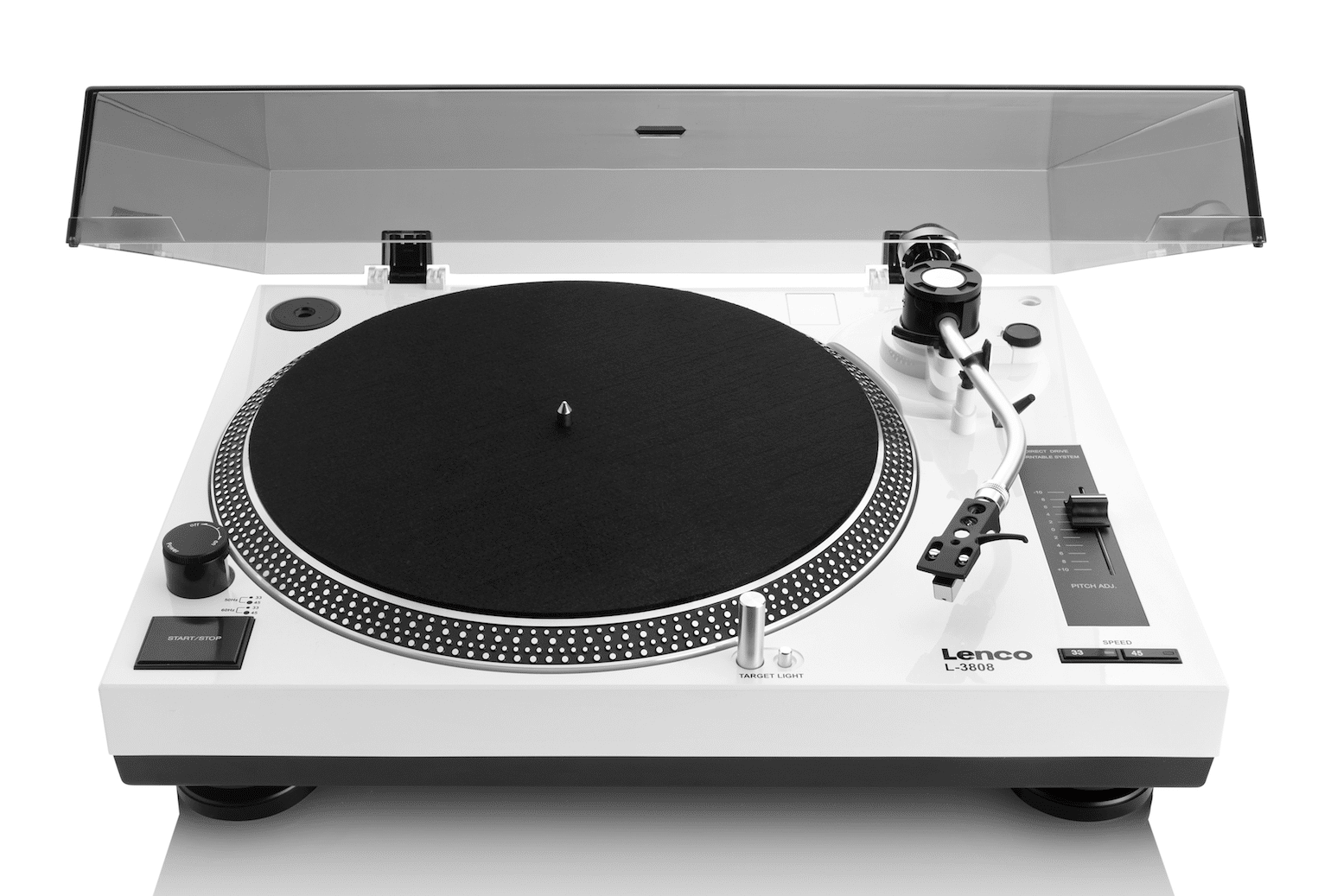
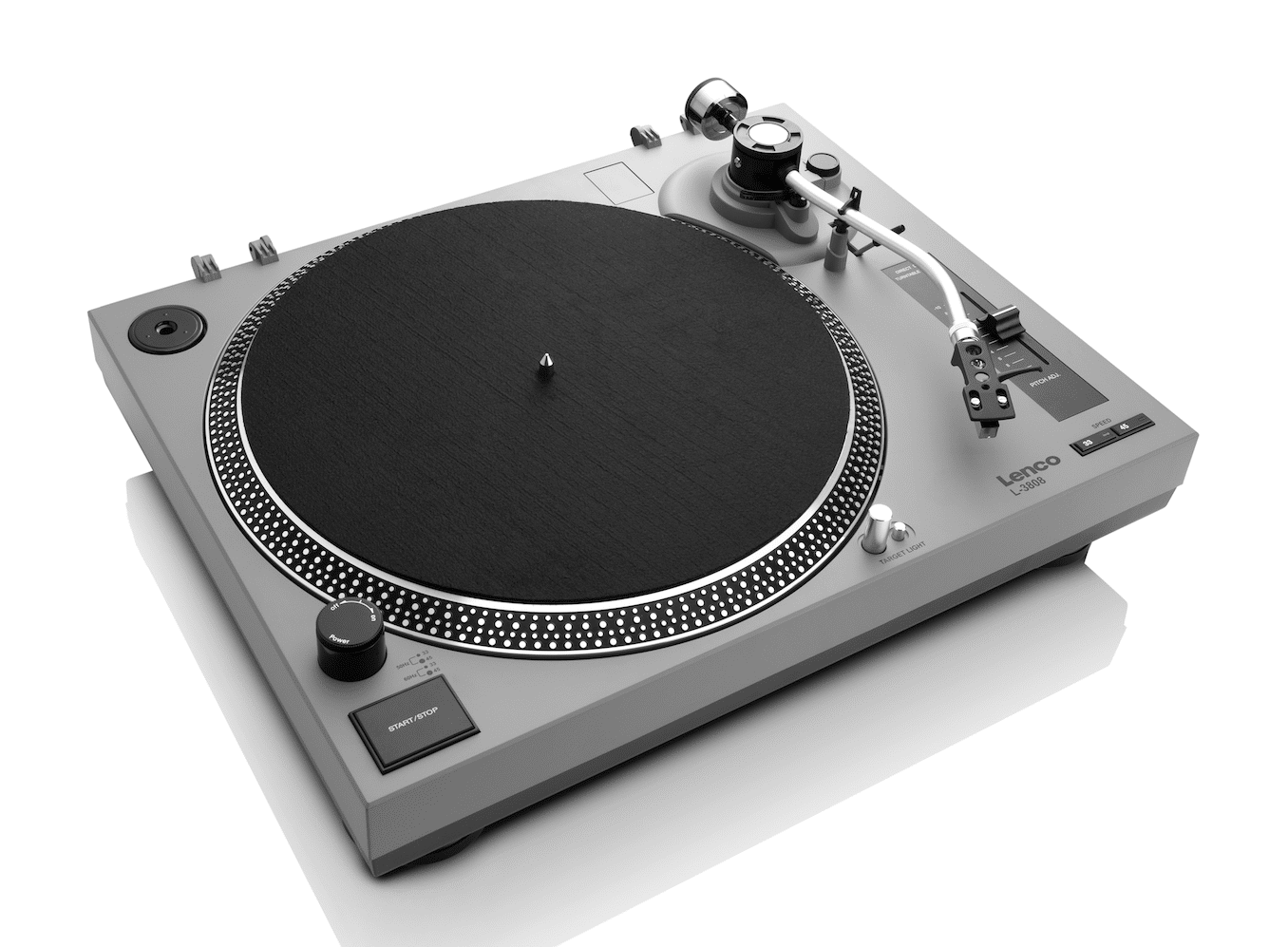


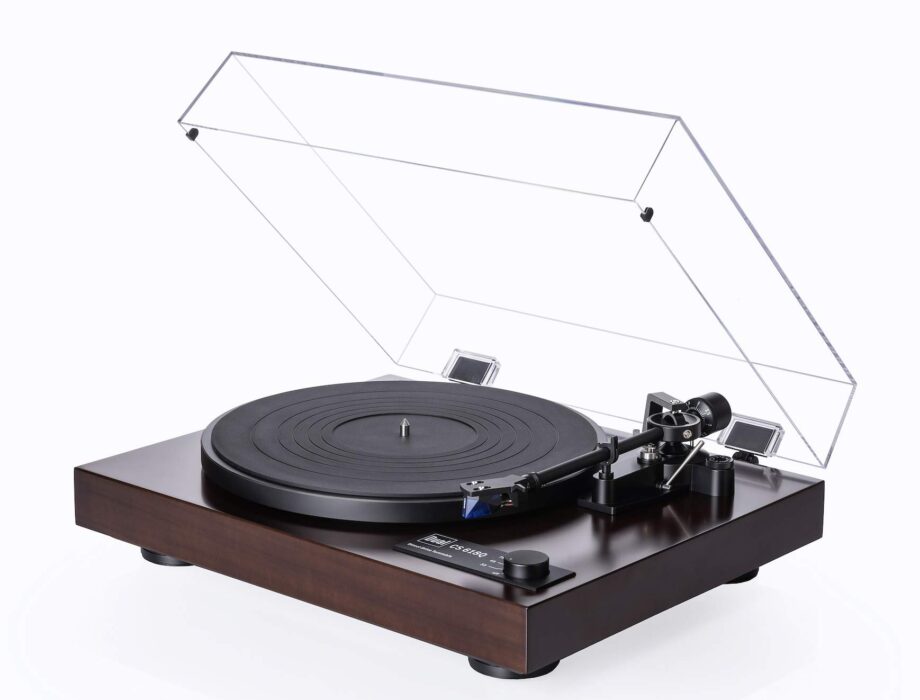
Hi Paul , greetings from Greece , after reading your post i ordered and im waiting to receive Lenco L – 3808 as a replacement to my previous Numark TTUSB that i have since 2010 ! No complains with this tt i just wanted something new and better . You said in your post that at 33 speed you notice a small slowdown is that correct ? Will i see the same? You adjusted the pitch how much ? If i adjust i should leave it there for ever ? Thx !!!
Thanks for your question – there’s no guarantee that you’ll see the same speed shifts that I did. Yours might be fine but you can check via the strobe on the outer rim of the platter. If you do need to change the pitch slider, use that strobe again to gauge how much you need to move the slider.
I have no experience to see and adjust the speed via strobe ,it is that easy Paul ? What do you think if i change the cartridge with the ortofon om 5e ? Or AudioTechnica AT-85EP which needs lower tracking force ? Thx for the quick reply Paul !!
Please check out the manual for more information but, in use, you will see one of the the illuminated strobe lines (those dots painted on the side of the platter will be lit by the turntable’s built-in light source) remain optically still at 33.33rpm and another strobe line will remain still at 45rpm. If the line tends to wander to the left or right then you’ll know that there are speed variations at play which will require slight adjustments to the pitch slider.
Thx Paul ,last question for cartridge . Ortofon OM 5E or AufioTechnika AT – 85EP ? Ortofon has recommended tracing force 1.5 to 2 grams and Audiotechnika has 1 to 1,5 grams .
Hi Evangelos – is there any particular reason why you short-listed a P-mount cartridge?
Sorry Paul my mistake ,what do you recommend between Ortofon OM 5E , AUDIO TECHNICA AT95E and Audio Technica AT-VM95E ?
I’d go for the VM95E, Evangelos.
How is AufioTechnika AT – 85EP ? I just found it with an adaptor !!
Hello Paul, a great review of the Lenco L3808. This is one of the many reviews that made me decide to buy this tt for my vintage B&O set. That is not my primary set, but the B&O have I bought from different places on the internet for less than 120,– euros. Only the Beovox speakers are mine since the first part of the seventies. Since that time I have had several different cartridges, and some of those I still have. One of those is an Ortofon X-1MC HOMC cartridge, which I have placed on the Lenco. I use the Lenco built-in phono-amp amd I must say the sq is really, really great. I never thought that this would be possible with this type of tt. My advice to others would be, if you have an old high output mc-cartridge then try it on this tt. I would not buy a new HOMC because that is to costly for this Lenco, but if you have a spare, just try it. You will be surprised.
Thanks for the good review, and perhaps you could try this in a future setup.
Greetings, Arie
Hello Paul!
There is a big problem on this player (but for some reason no one writes about it) – The difficulty of setting the parallelism of the tonearm tube to the table plane. In other words, setting up a VTA. To properly install the VTA, you need to lower the tonearm. And this is impossible. Therefore, the only way out is additional slipmats.I installed a regular felt slipmat (about 3 mm thick) on top of another rubber slipmat (5 mm thick) and only then the tonearm became parallel to the table and the VTA angle became correct. But in this case, the height of the spindle axis becomes small. And thick vinyl falls on the slipmat (spindle axis) with almost no margin.
What do you think about installing a VTA angle?
Thanks.
Hi Aleks – I sympathise with your predicament but the Lenco isn’t aimed at people who are that concerned about turntable set up. It’s more of a plug-and-go design for users who care about music sure but…not *that* much about installation and tweaking. If VTA is a concern – and you’re right to be concerned, I agree – then a more tweakable design should really be your goal.
hello Paul,
greetings from the Netherlands. I have see your review of the Lenco LS 3808 wich i use with a AT-VM95EN Element on a bluosound powernode N330. if i understand your revieuw correctly you advice to use a extern pre-amp in statt the build in pre amp? wenn yess, can you recommand a extern pre-amp n bfor this line up? (budget ca. 125 pound/150€ or is that impossible) thanks and greetz Bert
For the budget check out Pro-Ject Phono Box MM amp on Amazon, also Rega’s Fono Mini.